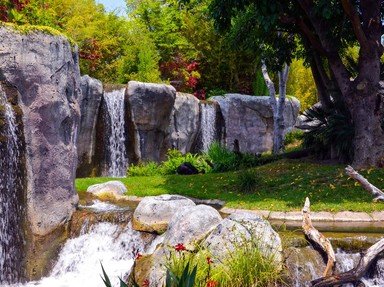Today, we continue our exploration of the zoo and visit three fascinating animal families that have adapted to very different environments.
Our first stop is the
Family House, home to a diverse group of predators known for their social structures and adaptability. In one enclosure, a
prowls quietly. This highly social carnivore is native to forests and tundra across the Northern Hemisphere. Its complex pack dynamics and communication skills have fascinated scientists for decades.
Nearby, the tiny
uses its oversized ears to cool down in the harsh desert environment it calls home. This small creature is native to the Sahara and has adapted remarkably well to survive in one of the world's most extreme climates.
In a more tropical setting, a shy
moves silently through a dense forest. Also known as the Asiatic wild dog, this species hunts cooperatively in packs and often preys on deer and wild boar in their natural habitats.
Next, we visit the
Family House, home to species inhabiting very diverse climates. In an icy enclosure, a solitary
navigates a habitat designed to resemble the Arctic sea ice. As the largest land carnivore, it is severely challenged by melting ice caused by climate change.
Not far away, a powerful
ambles through a forested exhibit, which resembles its natural habitat in North America. This animal is known for its strength, and its diet ranges from fish to berries depending on the season.
Finally, a majestic
munches on bamboo in a lush, temperate forest enclosure. This species is native to China and is a global conservation symbol, known for its specialised diet and the international efforts to protect its shrinking habitat.
Our last stop today is the
House, where we can observe aquatic mammals adapted to both land and sea. On rocky platforms, a group of
basks in the sun, known for their loud barks and their impressive agility both in water and on land.
Nearby, a
surfaces quietly in the water. These shy creatures are expert divers and use coastal haul-outs to rest.
Resting on the icy shoreline, a massive
shows off its long tusks, which it uses to defend its territory and haul itself onto the ice. These social animals, native to Arctic seas, face increasing threats from habitat loss and human activity.

